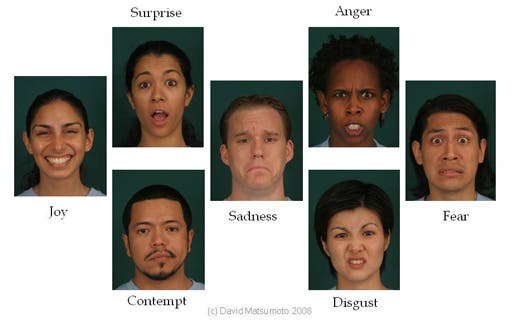
There are over 7,000 languages spoken in the world today. And while there is a lot of common ground in how people express body language in different cultures, one thing seems to be ubiquitous to humans: facial expressions as reactions to prime emotions, such as fear, joy, or disgust.
According to new research, mice also have facial expressions that they cannot readily control and which appear predictably under certain stimuli. This important work might help unravel the evolutionary origin of emotions.
The universality of emotional facial expressions
Charles Darwin was the first to suggest that the facial expressions of emotions are universal. In fact, this was one of the centerpieces of his theory of natural selection, proposing that emotions and their expressions were biologically innate and evolutionarily adaptive, and that similarities in them could be seen phylogenetically.
This particular idea was not validated until the 1970s, when studies showed high cross-cultural agreement in judgments of emotions in faces by people in both literate and preliterate cultures.
Over 100 modern studies published since then — which have been carried out by different researchers from different institutions using different methodologies with participants from different cultures — have converged towards the same set of results, pointing towards the universal facial expressions of at least seven emotions: anger, contempt, disgust, fear, joy, sadness, and surprise.

Of mice and facial expressions
In a new study, researchers at Max Planck Institute of Neurobiology in Germany used machine vision to study the facial expressions of mice in relation to the emotions that they experienced.
Their work showed that the facial expressions of mice were not just a reaction to the environment, but rather a reflection of their internal emotional state. The researchers were able to reliably link five emotional states to the facial expressions of mice: pleasure, disgust, nausea, pain, and fear, all of which were clearly distinguishable for the computer algorithms.
“Mice that licked a sugar solution when they were thirsty showed a much more joyful facial expression than satiated mice,” explains Nadine Gogolla, who led the study.
When they were offered a slightly salty solution to quench their thirst, the mice exhibited a “satisfied” facial expression, while a very salty solution produced a “disgusted” face as a response.
The researchers also scanned the brains of the mice in order to investigate how neural activity in different brain regions drives facial expressions.
When they activated certain neurons with light shined on specific brain areas known to play a role in emotional processing, the mice exhibited predictable facial expressions.
One such brain area is the insular cortex, where the emotionally-related behavior and perception of emotions are processed in both humans and animals. Neurons in the insular cortex reacted with the same strength and at exactly the same time as the mouse changed facial expression.
This is actually tremendously important research. Emotions are an incredibly important aspect of human life, but research so far has not been able to precisely identify the mechanisms responsible for all the complex feelings that we have.
“We humans may notice a subtle facial change in the mice, but we can only recognize the emotion behind it with a great deal of experience and can hardly ever determine its intensity,” says Nejc Dolensek, the study’s lead author. “With our automated face recognition system, we can now measure the intensity and nature of an emotion on a timescale of milliseconds and compare it to the neuronal activity in relevant brain areas.”
All of these results suggest that there may be “emotion neurons”, which are dedicated to processing and expressing emotion in the body, with each sensation being controlled by a different type of neuron.
“By recording facial expressions, we can now investigate the fundamental neuronal mechanisms behind emotions in the mouse animal model,” explains Nadine Gogolla. “This is an important prerequisite for the investigation of emotions and possible disorders in their processing, such as in anxiety disorders or depression.”
The findings appeared in the journal Science.









